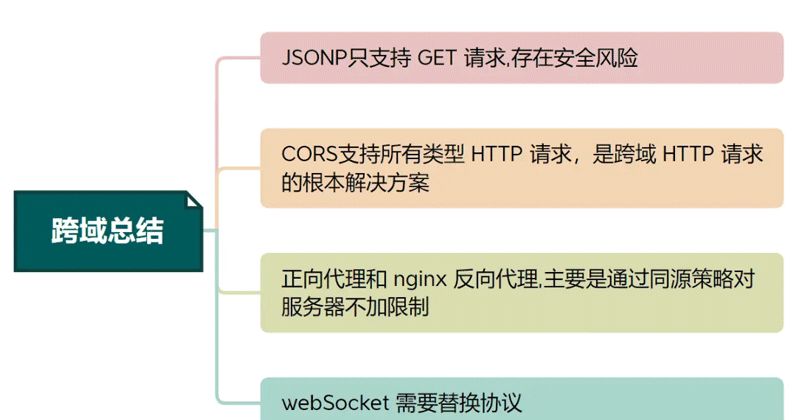目录
- 1.HTTP 简介
- HTTP/0.9 ( 1991 )
- HTTP/1.0 (1996 )
- HTTP/1.1(1997)
- 常用状态码
- header请求头
- header响应头
- Content-Type
- 1.application/x-www-form-urlencoded
- 2.multipart/form-data
- 3.application/json
- https
- HTTP2
- HTTP3
- 2.Ajax
- XHR
- 缺点
- Fetch
- 优点
- 缺点
- XML请求取消
- Fetch请求取消
- Axios请求取消
- XML获取 progress
- Fetch获取Progress
- XML超时
- Fetch超时
- Fetch错误码
- 兼容XHR对象
- 3.同源策略和跨域请求
- 同源策略限制
- 跨域网络访问
- 不同源的窗口/文档交流
- 网络跨域解决方案
- 1.JSONP
- 2.CORS
- 简单请求
- 复杂请求
- 网络跨域解决方案-正向代理
- 网络跨域解决方案-反向代理
- WebSocket
- 总结
1.HTTP 简介
HTTP ( HyperText Transfer Protocol)超文本传输协议,是万维网(World Wide Web)的基础协议
HTTP/0.9 ( 1991 )
- 仅支持
GET请求 - 不包含
HTTP头,只能传输 HTML 文件 - 没有状态码或错误代码
HTTP/1.0 (1996 )
- 发送时添加协议版本信息
- 响应添加状态码,我们熟知的
200、404等 - 引入了
HTTP头,多了传递信息的手段,更加灵活和方便扩展 - HTTP 头里面引入了重要的
content-type属性,具备了传输除纯文本HTML文件以外其他类型文档的能力
HTTP/1.1(1997)
- 连接复用,长连接
- 多个请求都可以复用一个
tcp连接。 - 而
1.0每次请求都需要重新建立连接。

- 管道化技术
- 多个连续的请求不用等待返回就可以发送下一个请求,这样就减少了耗费在网络延迟上的时间
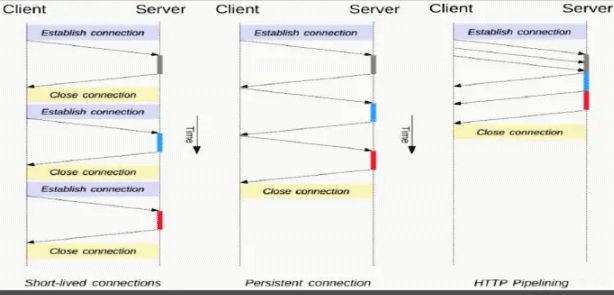
- 响应分块
- 单个请求返回部分内容,需前后端协商

- 新的缓存控制机制
cache-control、eTag就是1.1引入的,强缓存和协商缓存- 新增
host请求头,能够使不同域名配置在同一个IP地址的服务器上
HTTP1.x请求报文
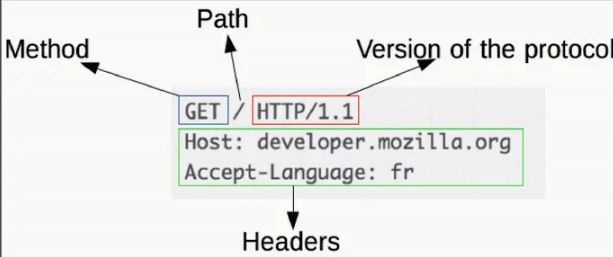
HTTP1.x响应报文
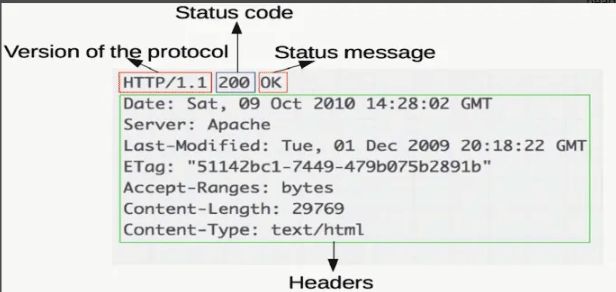
常用状态码
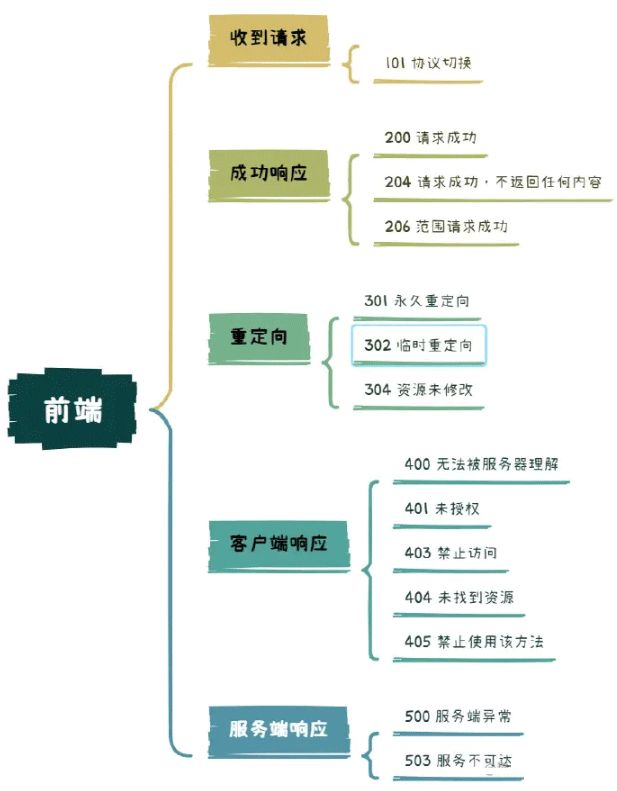
header请求头
名字 | 说明 | 示例 |
Accept | 告知(服务器)客户端可以处理的内容类型 | text/html, application/xhtml+xml,application/xml;q=0.9,*/*;q=0.8 |
Aaccept-Encoding | 客户端能够理解的内容编码方式 | gzip, deflate |
Accept-Language | 客户端可以理解的语言 | zh-CN,zh;q=0.9,en;q=0.8 |
Cache-Control | 表示浏览器的缓存方式 | Cache-Control: max-age = xxx |
cookie | cookie信息 |
|
Connection | 是否是长连接 | keep-live |
Content-Type | 实际发送的数据类型 | content-type:application/x-www-form |
Host | 要发送到的服务器主机名和端口号 | www.baidu.com |
User-Agent | 用户代理。包含应用类型、操作系统、软件开发商以及版本号等 |
|
Referer | 当前请求的来源页面的地址 |
|
header响应头
名字 | 说明 | 示例 |
Date | 服务器的响应的日期和时间 |
|
Connection | 是否会关闭网络连接 | Connection: keep-alive |
Keep-Alive | 空闲连接需要保持打开状态Keep-Alive: timeout=5, max=10的最小时长和最大请求数( Connection设置为“keep-alive”才有意义) | Keep-Alive: timeout=5, max=10空闲5秒,最多接收10次请求就断开。 |
Content-Encoding | 内容编码方式 | Content-Encoding: gzip |
Content-Length | 报文中实体主体的字节大小 | content-Length: 1963 |
Content-Type | 内容的内容类型 | Content-Type: text/html; charset=utf-8 |
Server | 服务器所用到的软件相关信息 | Server: openresty 基于NGINX的可伸缩的Web平台 |
Set-Cookie | 向客户端发送cookie | Set-Cookie: imooc_isnew=2; expires=Thu, 02-Mar-202312:3242 GMT; Max-Age=31536000; path=/; domain=.baidu.com |
Content-Type
1.application/x-www-form-urlencoded
<body>
<button type="button" id="btnSend">发送请求</button>
<div>
<div>结果:</div>
<div id="result"></div>
</div>
<script>
btnSend.onclick = fetchByUrlencoded;
function fetchByUrlencoded() {
// 对中文还能自行编码
// const params = new URLSearchParams({
// name: 'yunmu',
// age: 18
// });
fetch("/urlencoded", {
method: "POST",
headers: {
"Content-Type": "application/x-www-form-urlencoded",
},
body: "name=yunmu&age=18",
// body: params.toString()
})
.then((res) => res.json())
.then((res) => {
console.log("收到结果:", res);
result.innerHTML = JSON.stringify(res);
});
}
</script>
</body>
2.multipart/form-data
<body>
<div>结果:</div>
<div id="result"></div>
<div>表单提交</div>
<form action="/multipart" method="post" enctype="multipart/form-data">
<input type="text" name="name" value="tom" />
<input type="text" name="age" value="18" />
<button type="submit">提交表单</button>
</form>
<hr />
<div>代码提交:</div>
<button type="button" id="btnSend">发送请求</button>
<script>
btnSend.onclick = fetchByMultipart;
function fetchByMultipart() {
const formData = new FormData();
formData.append("name", "yunmu");
formData.append("age", 18);
fetch("/multipart", {
method: "POST",
// 不要设置 content-type
// headers: {
// "Content-Type": "multipart/form-data",
// },
body: formData,
})
.then((res) => res.json())
.then((res) => {
console.log("收到结果:", res);
result.innerHTML = JSON.stringify(res);
});
}
</script>
</body>
3.application/json
<body>
<button type="button" id="btnSend">发送请求</button>
<div>
<div>结果:</div>
<div id="result"></div>
</div>
<script>
btnSend.onclick = fetchByJSON;
function fetchByJSON() {
fetch("/json", {
method: "POST",
headers: {
"Content-Type": "application/json",
},
body: JSON.stringify({ name: "yunmu", age: 18 }),
})
.then((res) => {
console.log("返回的content-type:", res.headers.get("Content-Type"));
return res;
})
.then((res) => res.json())
.then((res) => {
console.log("收到结果:", res);
result.innerHTML = JSON.stringify(res);
});
}
</script>
</body>
服务端代码:
const express = require("express");
const path = require("path");
const multer = require("multer");
const server = express();
server.use(
express.urlencoded({
extended: true,
})
);
server.use(express.json());
server.use(express.static(path.join(__dirname, "./static")));
server.use("/urlencoded", function (req, res) {
console.log("收到请求(urlencoded)");
console.log("body:", req.body);
res.json({
code: 10000,
data: req.body,
});
});
server.use("/multipart", multer().none(), function (req, res) {
console.log("收到请求(multipart)");
console.log("body:", req.body);
res.json({
code: 10000,
data: req.body,
});
});
server.use("/json", multer().none(), function (req, res) {
console.log("收到请求(json)");
console.log("body:", req.body);
res.json({
code: 10000,
data: req.body,
});
});
server.listen(3000, function () {
console.log("listening at port 3000");
});
https
HTTPS (Hypertext Transfer Protocol Secure):超文本传输安全协议,在HTTP的基础上加了一个Secure安全HTTPS是HTTP协议的一种扩展,使用传输层安全性(TLS)或安全套接字层(SSL)对通信协议进行加密HTTP + SSL(TLS) = HTTPS
HTTP2
- 二进制帧
- 多路复用
- 头部压缩
- 服务器推送
HTTP3
- 基于UDP的传输层协议,那就是快啊
2.Ajax
- 全称:
Asynchronous Javascript And XML(异步JavaScript和XML ) - 它并不是指单一的某种技术,而是多种现有技术的结合,实现“无页面刷新的数据获取”
- 这些技术包括了:
HTML或XHTML、CSS、JavaScript、DOM、XML、XSLT,以及最重要的XMLHttpRequest
XHR
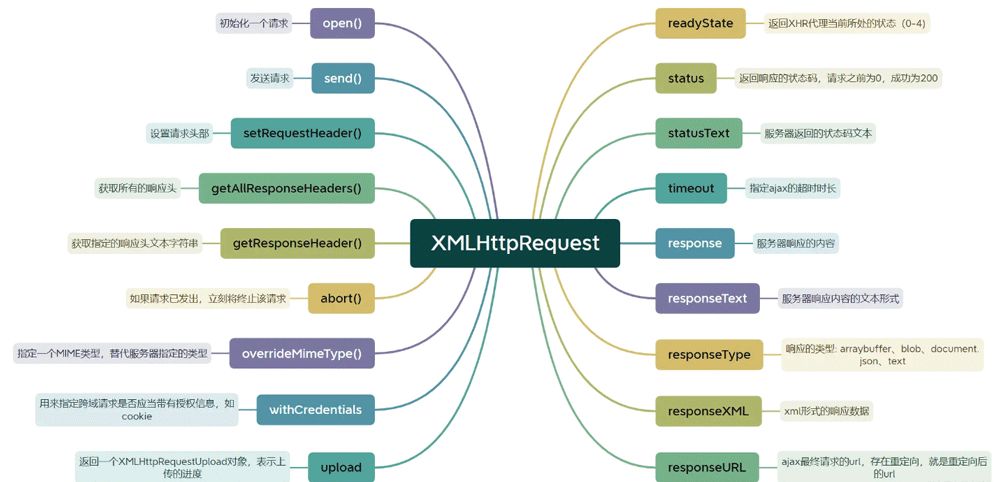

基本使用:
<body>
<div>测试ajax 界面</div>
<button id="ajaxBtn">AjAX局部刷新</button>
<div class="ajax-change" id="responseDiv">change区域</div>
<script>
function test() {
//1. 创建实例对象
const xhrObj = new XMLHttpRequest();
//注册readystatechange回调监听
xhrObj.onreadystatechange = function () {
//readyState==4 && status=200 代表请求成功
if (xhrObj.readyState == 4 && xhrObj.status == 200) {
//局部刷新文本
document.getElementById("responseDiv").innerHTML = xhrObj.responseText;
}
};
//请求错误回调
xhrObj.onerror = function () {
console.log("-------onerror-------:");
};
//请求成功完成回调
xhrObj.onload = function () {
console.log("-------onload-------:", xhrObj.responseText);
};
//请求开始回调
xhrObj.onloadstart = function () {
console.log("-------onloadstart-------");
};
//请求完成回调,不论请求成功与否
xhrObj.onloadend = function () {
console.log("-------onloadend-------");
};
//设置请求地址,true 异步请求,false:同步请求,
xhrObj.open("post", "http://127.0.0.1:3000/xhr", true);
//设置请求携带header
xhrObj.setRequestHeader("Content-Type", "application/x-www-form-urlencoded");
//发送请求数据
xhrObj.send("xhr=1");
}
document.getElementById("ajaxBtn").addEventListener("click", function () {
test();
});
</script>
</body>
服务端代码:
import http from "http";
import bodyParser from "body-parser";
import express from "express";
import createError from "http-errors";
// const multiparty = require('multiparty');
const port = 3000;
const app = express();
app.use(bodyParser.urlencoded({ extended: true }));
const server = http.createServer(app);
//设置跨域访问
app.use(function (req, res, next) {
//设置允许跨域的域名,*代表允许任意域名跨域
//"*"
res.header("Access-Control-Allow-Origin", req.headers.origin);
//允许携带cookie
res.header("Access-Control-Allow-Credentials", "true");
//允许的header类型
res.header("Access-Control-Allow-Headers", [
"X-PINGOTHER",
"content-type",
"Origin",
"X-Requested-With",
]);
//跨域允许的请求方式
res.header("Access-Control-Allow-Methods", "DELETE,PUT,POST,GET,OPTIONS");
res.header("Access-Control-Max-Age", `${20}`);
if (req.method.toLowerCase() == "options") res.send(200);
//让options尝试请求快速结束
else next();
});
app.post("/xhr", async (_req, _res) => {
console.log("xhr: 收到请求");
await sleep(2 * 1000);
_res.json({
code: 10000,
});
});
function sleep(time: number) {
return new Promise((resolve) => setTimeout(resolve, time));
}
app.get("/fetch", async (_req, res) => {
console.log("fetch:收到请求", _req.url);
await sleep(10 * 1000);
return res.json({
code: 10000,
});
});
app.get("/test1", (_req, res) => {
res.send("test1");
});
app.get("/test2", (_req, res) => {
res.send("test2");
});
app.get("/timeout", async (_req, res) => {
await sleep(12 * 1000);
res.send("test2");
});
app.get("/test4", async (_req, res) => {
console.log("收到请求=test4=", _req.url);
// res.send('hello')
await sleep(30000);
return res.json({
REV: true,
DATA: {
msg: "成功",
},
});
});
server.listen(port, () => {
console.log("监听端口:", port);
});
// catch 404 and forward to error handler
app.use((_req: express.Request, _res: express.Response, next: express.NextFunction) => {
const error = createError(404);
next(error);
});
process.on("unhandledRejection", (reason: {} | null | undefined, p: Promise<any>) => {
console.error("自定义错误 Unhandled Rejection at:", p, "reason:", reason);
// application specific logging, throwing an error, or other logic here
});
缺点
- 容易回调地狱
- 不符合关注分离
- 请求和响应都在 XHR 对象上
Fetch
- 在原有 XHR 基础上改革,但是因为技术债的约束,不好更新
- 重新设计了一套fetch API

优点
Promise语法,解决了回调地狱问题- 更合理的设计,分离
Request,Response等通用对象 - 前端可拦截
301,302等跳转 - 支持数据流
(Stream),方便处理大文件 - 语法简单
基本使用:
<script>
// get
fetch("http://127.0.0.1:3000/test1")
.then((response) => response.text())
.then((text) => console.log("获取到的数据对象:", text))
.catch((err) => console.log("Request Failed", err));
//post
fetch("http://127.0.0.1:3000/report", {
method: "POST",
headers: {
"Content-Type": "application/x-www-form-urlencoded;",
},
body: "report=2",
mode: "cors", //设置跨域
})
.then((response) => response.json())
.then((json) => console.log("post 获取到的数据对象:", json))
.catch((err) => console.log("Request Failed", err));
</script>
拦截3xx重定向
<body>
<div>
<button id="btnXhr">XHR</button>
<button id="btnFetch">Fetch</button>
</div>
<script>
btnXhr.onclick = xhr30x;
btnFetch.onclick = fetch30x;
function fetch30x() {
fetch("http://www.baidu.com", { redirect: "error" }).catch((err) =>
console.log("err:", err)
);
}
function xhr30x() {
const xhrObj = new XMLHttpRequest();
xhrObj.onreadystatechange = function () {
console.log("xhrObj.status==", xhrObj.status);
};
xhrObj.open("get", "http://www.baidu.com", true);
//设置请求携带header
xhrObj.setRequestHeader("Content-Type", "application/x-www-form-urlencoded");
//发送请求数据
xhrObj.send("xhr=1");
xhrObj.onerror = function () {
console.log("-------onerror-------:");
};
}
</script>
</body>
缺点
- 中断请求麻烦
- 使用其他
API实现(AbortController和AbortSignal) - 缺少直接获取请求传输进度的能力,例如
XHR的onProgress事件 - 使用
Response.body给我们返回了一个ReadableStream对象 - 不支持超时
- 使用setTimeout自己封装
- 错误不会被拒绝(状态码 400-500),并不会触发
Promise的reject回调 - 兼容性
XML请求取消
- XMLHttpRequest.abort()
Fetch请求取消
AbortController对象的abort()
<body>
<div>测试fetch 界面</div>
<button id="btnSend">发送请求</button>
<button id="btnCancel">取消请求</button>
<script>
const controller = new AbortController();
const signal = controller.signal;
btnSend.onclick = function sendFetch(test) {
fetch("http://127.0.0.1:3000/fetch", { signal })
.then((response) => {
return response.text();
})
.then((text) => {
console.log(text);
});
};
btnCancel.onclick = function () {
console.log("取消请求");
controller.abort();
};
</script>
</body>
Axios请求取消
const controller = new AbortController();
const signal = controller.signal;
axios.get("/foo", {
signal,
}).then(() => {});
// 取消请求
controller.abort();
XML获取 progress
<body>
<div>测试ajax 界面</div>
<button id="ajaxBtn">AjAX局部刷新</button>
<script>
function test() {
// 创建实例对象
const xhrObj = new XMLHttpRequest();
xhrObj.responseType = "blob";
//onprogress
xhrObj.onprogress = function (event) {
console.log(
"total:",
event.total,
"progress:",
event.loaded,
"%:",
(event.loaded / event.total) * 100 + "%"
);
if (event.lengthComputable) {
console.log("获取完毕");
}
};
xhrObj.open("get", "./test.mp4", true);
//发送请求数据
xhrObj.send();
//请求成功完成后下载
// xhrObj.onload = function (oEvent) {
// console.log(oEvent, "oEvent===");
// console.log(xhrObj.status, "status===");
// console.log(xhrObj.response, "response===");
// if (xhrObj.readyState === 4 && xhrObj.status === 200) {
// const blob = new Blob([xhrObj.response]);
// const video = URL.createObjectURL(blob);
// const link = document.createElement("a");
// link.href = video;
// link.download = "test.mp4";
// link.click();
// }
// };
}
document.getElementById("ajaxBtn").addEventListener("click", function () {
test();
});
</script>
</body>
Fetch获取Progress
<body>
<script>
let progress = 0;
let contentLength = 0;
fetch("./test.mp4")
.then((response) => {
// 通过响应头获取文件大小
contentLength = response.headers.get("Content-Length");
const reader = response.body.getReader();
return reader.read().then(function processResult(result) {
if (result.done) {
console.log("请求完毕");
return;
}
progress += result.value.byteLength;
console.log(
"total:",
contentLength,
"progress:",
progress,
"%:",
(progress / contentLength) * 100 + "%"
);
return reader.read().then(processResult);
});
})
.catch((err) => console.log("Request Failed", err));
</script>
</body>
XML超时
<body>
<div>测试ajax 界面</div>
<button id="ajaxBtn">发起超时请求</button>
<div class="ajax-change" id="responseDiv">change区域</div>
<script>
function test() {
//1. 创建实例对象
const xhrObj = new XMLHttpRequest();
//请求错误回调
xhrObj.onerror = function () {
console.log("-------onerror-------:");
};
//请求完成回调,不论请求成功与否
xhrObj.onloadend = function () {
console.log("-------onloadend-------");
};
//超时监听
xhrObj.ontimeout = function () {
console.error("The request timed out.");
document.getElementById("responseDiv").innerHTML = "The request timed out";
};
//设置网络超时时间
xhrObj.timeout = 5 * 1000;
xhrObj.open("GET", "http://127.0.0.1:3000/timeout", true);
//发送请求数据
xhrObj.send();
}
document.getElementById("ajaxBtn").addEventListener("click", function () {
test();
});
</script>
</body>
Fetch超时
<body>
<div>fetch 不支持超时</div>
<button id="ajaxBtn">发起超时请求</button>
<div class="ajax-change" id="responseDiv">change区域</div>
<script>
const oldFetch = fetch;
window.fetch = function (input, opts) {
return new Promise(function (resolve, reject) {
//开启超时
const timeoutId = setTimeout(function () {
reject(new Error("fetch timeout"));
}, opts.timeout);
oldFetch(input, opts).then(
(res) => {
//清除超时
clearTimeout(timeoutId);
resolve(res);
},
(err) => {
//清除超时
clearTimeout(timeoutId);
reject(err);
}
);
});
};
function test() {
// get
fetch("http://127.0.0.1:3000/timeout", { timeout: 5 * 1000 })
.then((response) => response.text())
.then((text) => console.log("获取到的数据对象:", text))
.catch((err) => console.error("Request Failed", err));
}
document.getElementById("ajaxBtn").addEventListener("click", function () {
test();
});
</script>
</body>
Fetch同源携带Cookie
<body>
<button id="ajaxBtn">xhr 携带cookie</button>
<script>
function test() {
//2018年以后 默认值从 {"credentials":"omit"} 修改为 {"credentials":"same-origin"}
fetch("./a.png")
.then((response) => response.text())
.then((text) => console.log("获取到的数据对象:", text))
.catch((err) => console.log("Request Failed", err));
}
document.getElementById("ajaxBtn").addEventListener("click", function () {
test();
});
</script>
</body>
Fetch错误码
<body>
<button id="ajaxBtn">fetch 404错误码</button>
<script>
function test() {
fetch("http://127.0.0.1:3000/test3", {
credentials: "include",
mode: "cors",
})
.then((response) => {
console.log("请求成功status:", response.status);
return response.text();
})
.catch((err) => console.log("Request Failed", err));
}
document.getElementById("ajaxBtn").addEventListener("click", function () {
test();
});
</script>
</body>
兼容XHR对象
function getXHR() {
let xhr = null;
if (window.XMLHttpRequest) {
xhr = new XMLHttpRequest();
} else if (window.ActiveXObject) {
//遍历IE中不同版本的ActiveX对象
let version = ["Msxml2", "Microsoft"];
for (let i = 0; i < version.length; i++) {
try {
xhr = new window.ActiveXObject(version[i] + ".XMLHTTP");
return;
} catch (e) {
console.log(e);
}
}
}
return xhr;
}
3.同源策略和跨域请求
- 同源策略限制了不同源之间如何进行资源交互,是用于隔离潜在恶意文件的重要安全机制
- 同源:
protocol + hostname + port
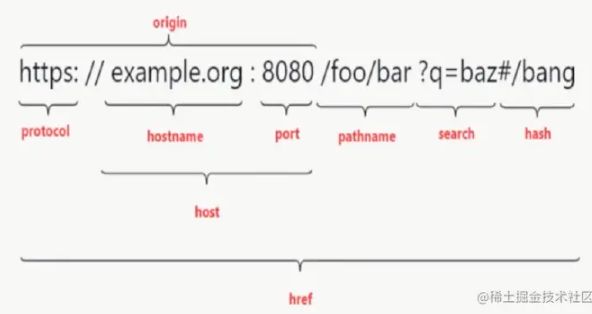
同源策略限制
- 存储:
localStroage,sessionStorage和indexedDB受限,cookie以本域和父域为限制 dom获取受限- 发送
ajax受限
跨域网络访问
- 跨域写操作一般被允许,例如∶链接(a标签),重定向,表单提交
- 跨域资源嵌入一般被允许,如
script、link、img、video、object、embed、iframe标签
不同源的窗口/文档交流
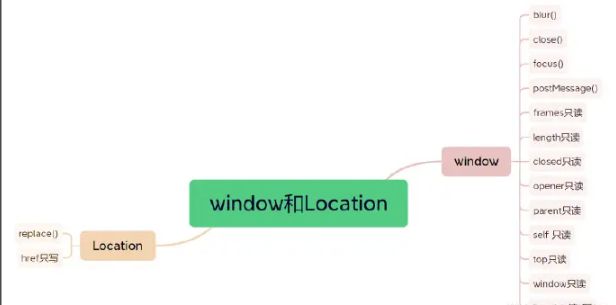
网络跨域解决方案
1.JSONP
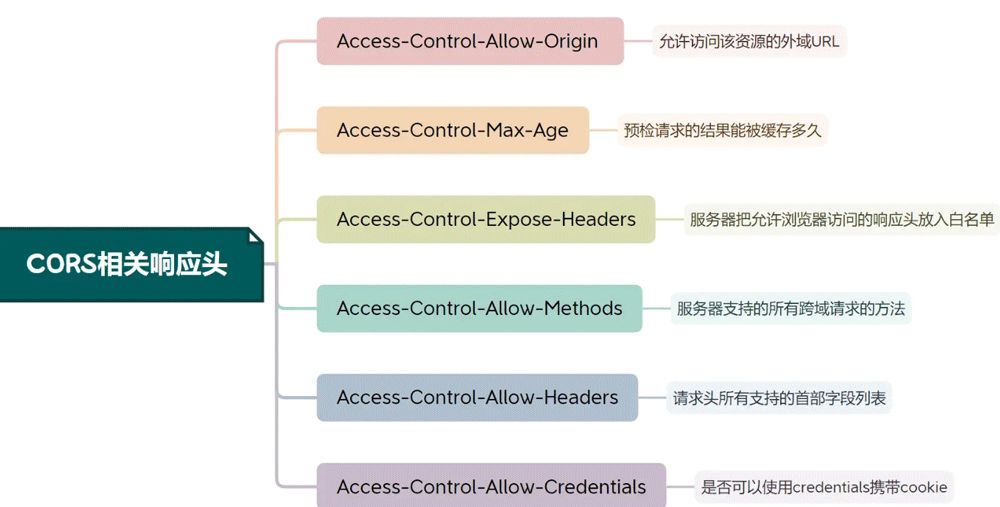
<script>
function jsonpCallback(data) {
console.log("我收到的数据了:", data);
}
</script>
<script src="http://127.0.0.1:3000/jsonp_request?callback=jsonpCallback"></script>
app.get("/jsonp_request", (_req, res) => {
const params = urlLib.parse(_req.url, true);
if (params.query && params.query.callback) {
const str = params.query.callback + "(" + JSON.stringify({ test: "服务端数据" }) + ")";
res.send(str);
} else {
res.send("Hello Yun");
}
// 可拿到回调函数的名称
console.log(params.query.callback);
});
JSONP缺点
- 只支持
GET请求,不支持POST等其他类型HTTP请求 - 存在明显的安全问题(服务端返回什么都执行)
2.CORS
- 定义∶跨源资源共享
(cross-origin sharing),是一种基于HTTP头的机制 - 该机制允许服务器除它自己以外的
origin访问加载其资源
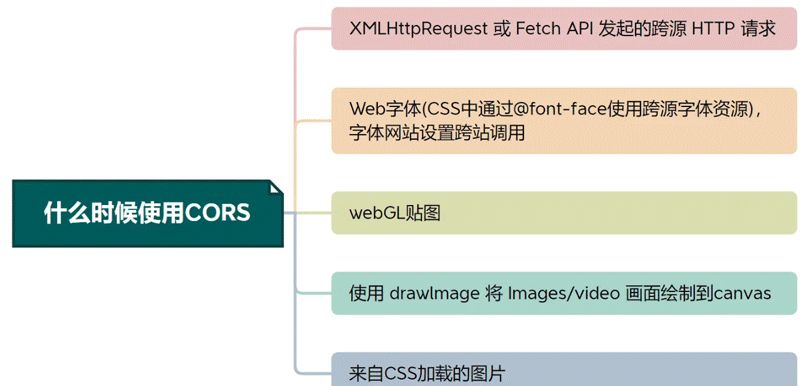
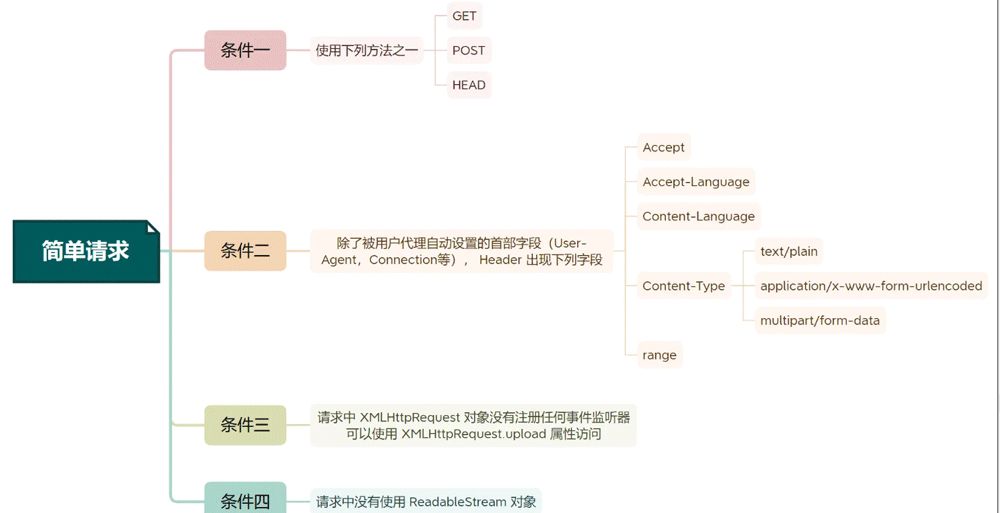
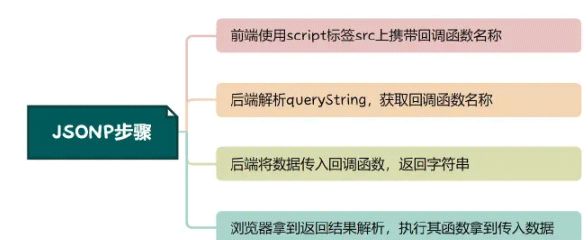
简单请求

- 如果携带身份凭证
(cookie),服务器不得设置Access-Control-Allow-Origin为通配符*,应设置特定域 - 服务器不能将
Access-Control-Allow-Headers的值设为通配符“*”,而应将其设置为首部名称的列表,如:Access-Control-Allow-Headers: X-PINGOTHER, Content-Type - 服务器不能将
Access-Control-Allow-Methods的值设为通配符“*”,而应将其设置为特定请求方法名称的列表,如:Access-Control-Allow-Methods: POST, GET
let whitList = ["http://127.0.0.1:5500"]; //设置白名单
//设置跨域访问
app.use(function (req, res, next) {
const origin = req.headers.origin as string;
if (whitList.includes(origin)) {
//设置允许跨域的域名,*代表允许任意域名跨域
res.header("Access-Control-Allow-Origin", origin);
//允许携带凭证
res.header("Access-Control-Allow-Credentials", "true");
//允许的header类型
res.header("Access-Control-Allow-Headers", ["X-PINGOTHER", "content-type", "Origin", "Accept"]);
//允许浏览器访问的响应头
res.header("Access-Control-Expose-Headers", "test");
//跨域允许的请求方式
res.header("Access-Control-Allow-Methods", "DELETE,PUT,POST,GET,OPTIONS");
//预检结果保存时间 1小时
res.header("Access-Control-Max-Age", `${5}`);
if (req.method.toLowerCase() == "options") {
res.send(204); //让 options 尝试请求快速结束
return;
}
}
next();
});
CORS中间件
let whitList = ["http://127.0.0.1:5500"]; //设置白名单
const corsOptions = {
origin: function (origin, callback) {
if (whitList.indexOf(origin) !== -1) {
callback(null, true);
} else {
callback(new Error("Not allowed by CORS"));
}
},
credentials: true,
maxAge: 20,
allowedHeaders: ["X-PINGOTHER", "content-type", "Origin", "Accept"],
};
app.use(cors(corsOptions));
复杂请求
- 不满足简单请求自然就是复杂请求了
- 复杂请求会先发一个预检请求
- 需要预检的请求,必须使用
OPTIONS方法发起一个预检请求到服务器,查看服务器是否允许发送实际请求
网络跨域解决方案-正向代理
- cli工具(
webpack配置devServer proxy) charles、fidler等代理软件,本质就是拦截请求代理
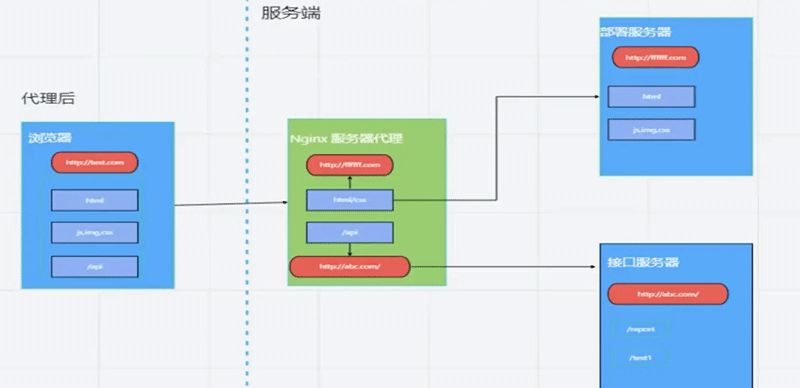
网络跨域解决方案-反向代理

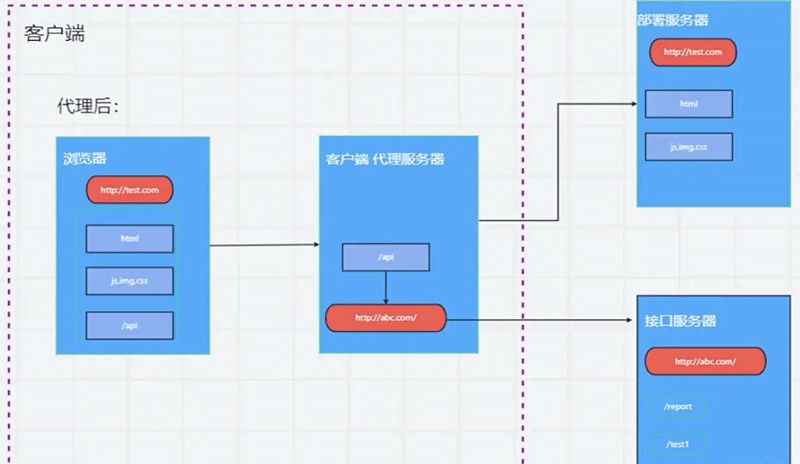
WebSocket
- 客户端和服务器之间存在持久的连接,而且双方都可以随时发送数据
服务端:
const WebSocket = require("ws");
const server = new WebSocket.Server({ port: 18000 });
server.on("open", function open() {
console.log("connected");
});
server.on("close", function close() {
console.log("disconnected");
});
server.on("connection", function connection(ws, req) {
// 发送欢迎信息给客户端
ws.send("服务器欢迎你链接");
ws.on("message", function incoming(message) {
// 广播消息给所有客户端
server.clients.forEach(function each(client) {
if (client.readyState === WebSocket.OPEN) {
client.send("服务器收到客户端消息 -> " + message);
}
});
});
});
客户端:
<style>
.txt {
font-size: 30px;
}
.inputBtn {
font-size: 40px;
}
</style>
<body>
<form onsubmit="return false;">
<h1>慕课聊天室:</h1>
<textarea id="repText" class="txt" style="width: 800px; height: 600px"></textarea>
<br />
<input
class="inputBtn"
type="text"
id="myInput"
name="message"
style="width: 300px"
value="Hello world"
/>
<input
class="inputBtn"
type="button"
id="mySend"
value="发送消息"
onclick="send(this.form.message.value)"
/>
</form>
<script type="text/javascript">
let socket;
const repTextEl = document.getElementById("repText");
if (window.WebSocket) {
socket = new WebSocket("ws://127.0.0.1:18000");
socket.onmessage = function (event) {
repTextEl.value = repTextEl.value + "\n" + event.data;
};
socket.onopen = function (event) {
repTextEl.value = "webSocket已链接";
};
socket.onclose = function (event) {
repTextEl.value = repTextEl.value + "连接被关闭";
};
} else {
console.log("浏览器不支持webSocket");
}
function send(message) {
if (!window.WebSocket) {
return;
}
if (socket.readyState == WebSocket.OPEN) {
socket.send(message);
} else {
console.log("webSocket还没有开启");
}
}
</script>
</body>
总结
